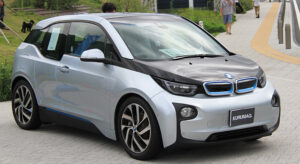- Founding of BMW in 1916
- Evolution of the BMW Logo
- Early Relocation and New Beginnings
- First BMW Motorcycle
- Entry into Car Manufacturing
- Impact of World War II
- Post-War Reconstruction
- Breakthrough with the New Class
- Global Expansion and Motorsport
- Launch of Electric i3
- Final Remarks
- Frequently Asked Questions
Ever wondered how BMW became a symbol of luxury and performance? This post dives into the complete history of BMW, tracing its journey from humble beginnings to automotive giant. We’ll explore key milestones, iconic models, and motor innovations that set BMW apart in the series. Discover how a small aircraft engine manufacturer evolved into one of the world’s most prestigious car brands.
BMW’s story is filled with fascinating twists and turns. From surviving World War II to pioneering electric vehicles, their legacy is nothing short of remarkable. You’ll learn about the brand’s commitment to quality, engineering excellence, and relentless innovation in their motor series. Whether you’re a car enthusiast or just curious, this comprehensive history will give you a new appreciation for BMW.
Founding of BMW in 1916
Roots with Karl Rapp and Gustav Otto
BMW’s origins can be traced to Gustav Otto and Karl Rapp, motor pioneers. Gustav Otto was the son of Nikolaus Otto, the inventor of the four-stroke internal combustion engine. He founded Flugmaschinenfabrik Gustav Otto in 1910. This company specialised in aircraft manufacture.
Karl Rapp established Rapp Motorenwerke in 1913. This company produced aircraft engines. Both companies were based in Munich, Germany. They played crucial roles in the aviation industry during World War I.
Merger into BFW
In 1916, Flugmaschinenfabrik Gustav Otto faced financial difficulties. It merged into Bayerische Flugzeug-Werke AG (BFW). The merger aimed to consolidate resources and expertise. BFW continued to focus on aircraft manufacturing.
This merger marked a significant step towards the formation of BMW. BFW laid the groundwork for future developments in aviation and automotive industries.
Transformation to BMW GmbH
Rapp Motorenwerke underwent a transformation in 1917. It was restructured and renamed Bayerische Motoren Werke GmbH (BMW). This change reflected a shift from aircraft engines to broader engineering projects.
The new company logo featured a blue and white roundel. These colours represented the Bavarian state flag. The logo symbolised BMW’s roots and commitment to quality engineering.
Evolution of the BMW Logo
Initial Design
The initial BMW logo was inspired by the Bavarian flag colours. The design featured blue and white quadrants, which represented the state colours of Bavaria. This choice reflected BMW’s roots in the region.
Aviation Heritage
BMW’s aviation heritage played a significant role in the evolution of its logo. During the 1920s, BMW manufactured aircraft engines. The logo came to symbolise a spinning propeller against a blue sky. This imagery linked BMW’s identity to its aviation past.
Modernisation Over Decades
Over the decades, the BMW logo underwent modernisation while retaining its core elements. The circular shape and blue and white colours remained constant. However, subtle changes were made to keep it contemporary.
Early Relocation and New Beginnings
Transfer to BFW
In 1922, BMW made a significant move. They transferred their engine construction operations to Bayerische Flugzeugwerke (BFW). This relocation was pivotal for the company. It allowed BMW to expand its production capabilities. The transfer marked the beginning of a new era.
BMW’s headquarters moved to Munich. The new location provided better facilities. It also offered more space for growth. This strategic decision helped BMW to scale its operations.
Foundation Date
BMW was officially founded on 7 March 1916. Initially, it was known as Bayerische Flugzeugwerke AG. Later, it became Bayerische Motoren Werke AG. The foundation date is crucial in BMW’s history.
This date marks the start of BMW’s journey in the automotive industry. From aircraft engines to motorcycles and cars, BMW evolved significantly.
Strategic Relocations
The relocations were not just about physical moves. They were strategic decisions aimed at growth. Moving to Munich allowed BMW to tap into new markets. It also provided access to skilled labour.
These moves had a positive impact on BMW’s growth:
- Increased production capacity: The new plant in Munich was larger.
- Access to skilled workforce: Munich had a pool of talented engineers.
- Better facilities: Modern facilities improved production efficiency.
These factors contributed to BMW’s success. The company grew rapidly after these relocations.
Impact on Growth
The early relocations had a lasting impact on BMW’s growth. By moving their headquarters and plant, BMW could produce more engines. They also started manufacturing motorcycles and eventually cars.
This diversification helped BMW become a global brand. The early decisions laid the foundation for future success.
First BMW Motorcycle
R32 Launch
In 1923, BMW launched its first motorcycle, the R32. This marked a significant milestone for the brand. The R32 was introduced at the Berlin Motor Show in September of that year. It featured a unique design that set it apart from other motorcycles.
The R32 was powered by a flat-twin boxer engine. This engine type became a hallmark of BMW motorcycles. The flat-twin design provided better balance and cooling. The engine had a capacity of 494cc and produced 8.5 horsepower. This allowed the motorcycle to reach speeds up to 60 miles per hour.
Innovative Features
The R32 had several innovative features. One of them was the use of shaft drive instead of chain drive. Shaft drive was more reliable and required less maintenance. It also reduced wear and tear, making the motorcycle more durable.
Another feature was the integrated gearbox and engine casing. This made the motorcycle lighter and more compact. The R32 also had a double-loop steel frame. This provided greater stability and strength.
Establishing Reputation
The R32 played a crucial role in establishing BMW’s reputation in motorcycling. It showcased the brand’s engineering prowess and commitment to quality. The innovative design and reliable performance impressed both riders and critics.
Entry into Car Manufacturing
Acquisition of Fahrzeugfabrik Eisenach
In 1928, BMW made a significant move by acquiring Fahrzeugfabrik Eisenach. This company was based in Thuringia, Germany. It was already producing vehicles under the Dixi brand. The acquisition marked BMW’s entry into the car segment.
This deal allowed BMW to transition from manufacturing aircraft engines and motorcycles to producing automobiles. Fahrzeugfabrik Eisenach’s facility became an essential production centre for BMW’s early cars.
Production of BMW 3/15
After acquiring Fahrzeugfabrik Eisenach, BMW began producing its first car. The model was called the BMW 3/15. It was based on the Austin 7, a popular British car at the time.
The BMW 3/15 had a four-cylinder engine with a capacity of 748 cc. The vehicle could reach a top speed of around 50 miles per hour (80 km/h). Production of this model started in 1929, shortly after the acquisition.
Diversification of Product Line
Entering the car market was crucial for BMW’s growth. Before this, the company primarily focused on motorcycles and aircraft engines. By diversifying into car manufacturing, BMW broadened its product line.
This move helped establish BMW as a versatile manufacturer. They were no longer limited to just one type of machine. It also opened new revenue streams for the company.
Impact on Brand Identity
Producing cars helped shape BMW’s brand identity. The company became known for its engineering excellence and innovative designs. The success of the BMW 3/15 laid the foundation for future models.
BMW’s entry into the car segment also positioned it as a competitor to established brands like Royce Motor Cars. This competition pushed BMW to continuously improve its vehicles.
Expansion and Growth
The success of their first car encouraged BMW to expand its production capabilities. New models followed, each building on the technological advancements of its predecessor. This period marked the beginning of BMW’s long journey in car manufacturing.
By entering the automobile industry, BMW secured its place as one of the leading vehicle manufacturers in Europe. They continued to innovate and set new standards in the automotive world.
Impact of World War II
Armaments Manufacturer
During World War II, BMW shifted its focus to the production of military aircraft engines. These engines were crucial for the Luftwaffe, Germany’s air force. The company also manufactured motorcycles and other military vehicles. This shift in production was significant as it marked a departure from their earlier focus on luxury cars.
The war effort required BMW to produce large quantities of armaments. By 1943, they were employing forced labourers, prisoners of war, and concentration camp inmates. This dark chapter in BMW’s history is well-documented and has been acknowledged by the company in later years.
Allied Requisition
In 1945, as the war ended, Allied forces occupied Germany. Many industrial plants, including BMW’s, were requisitioned by allied soldiers. BMW’s plants in Munich and Eisenach were taken over and repurposed for the Allies’ needs.
The occupation had a profound impact on BMW’s operations. Production was halted, and many facilities were damaged or destroyed during the conflict. The company’s resources were stretched thin, and their future seemed uncertain.
Dismantling Machines
Post-war, the Allied forces implemented policies to dismantle German war industries. BMW was no exception. Their machinery and tools were either dismantled or destroyed to prevent further military production.
This period saw the removal of essential equipment from BMW’s plants. The dismantling process was extensive and left the company with limited means to restart production. It took several years for BMW to recover from these losses.
Post-War Reconstruction
Stopgap Production
In 1945, BMW was in ruins. The war had left the company’s factories destroyed. To survive, they began producing household appliances. They made pots, pans, and bicycles. This production was a temporary measure. It helped the company stay afloat during difficult times.
Rebuilding Challenges
Rebuilding after the war was tough for BMW. The factories were heavily bombed. They needed to start from scratch. The German government imposed restrictions on production. BMW faced financial difficulties as well. They had lost many skilled workers during the war.
The management team focused on research and development. They aimed to rebuild their automotive division. The process was slow and required significant investment.
Return to Vehicle Production
BMW returned to vehicle production in 1948. They started with motorcycles before moving to cars. The first post-war car was the BMW 501, launched in 1952. It marked a new beginning for the company.
Breakthrough with the New Class
New Class Sedans
In the early 1960s, BMW launched the New Class sedans. These cars marked a significant shift for the company. The first model, the BMW 1500, appeared in 1962. It was a mid-sized sedan with a modern design.
The New Class sedans had advanced features. They included independent rear suspension and front disc brakes. These innovations set them apart from competitors.
BMW 1500 Success
The BMW 1500 played a crucial role in reviving the brand. It was well-received by both critics and customers. The car’s performance and design earned it many fans.
Sales of the BMW 1500 were strong. This model helped establish BMW as a serious player in the automotive market. The success of the 1500 led to more models in the New Class range.
Financial Stability
The New Class had a big impact on BMW’s financial stability. Before these cars, BMW faced financial difficulties. The sales from the New Class models provided much-needed revenue.
This period marked a turning point for BMW. The company went from struggling to becoming profitable again. The financial success allowed BMW to invest in new technologies and expand its lineup.
Market Position
The introduction of the New Class also improved BMW’s market position. These cars appealed to a wide range of customers. They offered a blend of performance, style, and practicality.
BMW’s reputation grew during this time. The New Class helped the company gain recognition as a maker of high-quality vehicles. This era laid the foundation for future success.
Team Effort
Creating the New Class was a team effort at BMW. Engineers, designers, and workers collaborated closely. Their hard work paid off with the success of these models.
The teamwork behind the New Class is an important part of BMW’s history. It showed what could be achieved when everyone worked together towards a common goal.
Global Expansion and Motorsport
International Markets
BMW began its global expansion in the 1970s. The company targeted markets in North America and Asia. In 1975, BMW established its first subsidiary in the United States. This move allowed them to directly import and sell their vehicles.
In Asia, Japan became an early market. By the 1980s, BMW had a strong presence in both regions. They used local partnerships to penetrate these markets effectively. BMW’s strategy focused on high-quality engineering and luxury appeal.
Expansion Strategies
BMW adopted various strategies to expand globally. They invested in production facilities outside Germany. In 1994, they acquired the British Rover Group. This acquisition helped them gain a foothold in the UK market.
They also established joint ventures in China. In 2003, BMW Brilliance Automotive was formed. This joint venture enabled local production of BMW cars in China. Local manufacturing reduced costs and improved market penetration.
Motorsport Achievements
BMW has a rich motorsport history. Their success began with touring car racing in the 1960s. The BMW 2002 model dominated European circuits. It won the European Touring Car Championship multiple times.
In the 1970s, they entered Formula 1 as an engine supplier. The BMW M12/13 turbocharged engine powered Nelson Piquet to victory in 1983. He won the Formula 1 World Championship that year.
Touring Car Success
Touring car racing has been a significant part of BMW’s motorsport journey. The BMW M3 is one of their most successful models in this category. It debuted in the mid-1980s and quickly made an impact.
The M3 won numerous championships, including the Deutsche Tourenwagen Meisterschaft (DTM). Its performance cemented BMW’s reputation for producing high-performance vehicles.
Brand Image
Motorsport played a crucial role in enhancing BMW’s brand image. Success on the track translated to credibility off it. Consumers associated BMW with speed, precision, and engineering excellence.
This association helped boost sales of their road cars. Models like the M3 and M5 benefited from their racing pedigree. Motorsport achievements highlighted BMW’s commitment to innovation and performance.
Engineering Prowess
Participation in motorsport pushed BMW’s engineering limits. Racing demanded constant innovation and improvement. Technologies developed for racing often trickled down to consumer vehicles.
For example, advancements in engine technology improved fuel efficiency and power output. Lightweight materials used in race cars were later incorporated into production models.
Launch of Electric i3

The BMW i3 was launched in 2013. It marked a significant milestone as BMW’s first mass-produced electric car. This model showcased the company’s dedication to innovation and sustainability.
Innovative Design
The BMW i3 featured a unique design. The exterior had a futuristic look with clean lines and a compact shape. Inside, the cabin used sustainable materials like recycled plastics and natural fibres. The seats were made from eco-friendly fabrics.
Sustainable Materials
BMW focused on sustainability with the i3. They used renewable resources extensively. The dashboard was crafted from eucalyptus wood, which grows quickly and is easily replenished. The leather used was tanned using olive leaf extract, reducing chemical use.
Electric Mobility
The i3 played a crucial role in BMW’s electric mobility strategy. It had an electric range of around 80-100 miles on a full charge. A range extender option was available, offering additional mileage for longer trips.
Innovation Centre
BMW developed the i3 at their innovation centre. This facility focused on advanced research and development. Engineers worked on improving battery technology and efficiency.
Significance
The launch of the i3 signified BMW’s commitment to a sustainable future. It demonstrated that luxury and eco-friendliness could coexist. The i3 also paved the way for future electric models in BMW’s lineup.
Real-Life Impact
Many drivers praised the i3 for its performance and eco-friendly features. It became popular in urban areas where short commutes were common. Owners appreciated the low running costs and reduced environmental impact.
Final Remarks
BMW’s journey from its founding in 1916 to the launch of the electric i3 is a testament to innovation and resilience. You’ve seen how BMW evolved from making aircraft engines to becoming a leader in the automotive industry. This rich history underscores BMW’s commitment to excellence, engineering prowess, and forward-thinking approach.
Now, it’s your turn to dive deeper into BMW’s legacy. Explore more about their groundbreaking technologies and iconic designs. Stay updated with their latest innovations and maybe even consider experiencing a BMW yourself. Follow our blog for more intriguing stories about automotive history and cutting-edge developments.
Frequently Asked Questions
When was BMW founded?
BMW was founded in 1916. It originally started as an aircraft engine manufacturer.
What does the BMW logo represent?
The BMW logo represents a stylised propeller, symbolising the company’s origins in aviation.
When did BMW produce its first motorcycle?
BMW produced its first motorcycle, the R32, in 1923.
When did BMW start manufacturing cars?
BMW entered car manufacturing in 1928 with the acquisition of Fahrzeugfabrik Eisenach.
How did World War II affect BMW?
World War II had a significant impact on BMW. The company shifted to producing military aircraft engines and faced severe damage from bombing raids.
What marked BMW’s post-war recovery?
BMW’s post-war recovery began with the introduction of the New Class series in 1962, which revitalised the company’s fortunes.
When did BMW launch its first electric car?
BMW launched its first electric car, the i3, in 2013.





